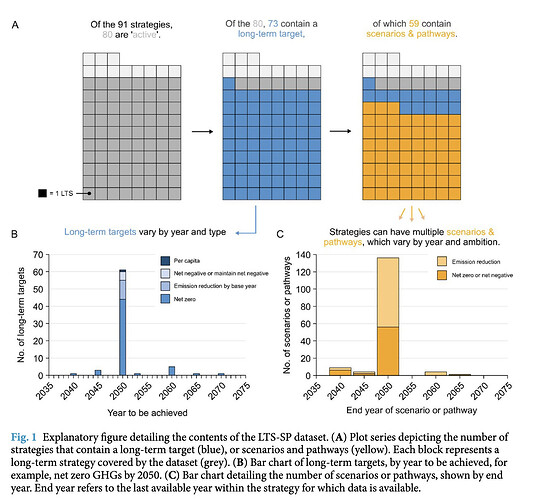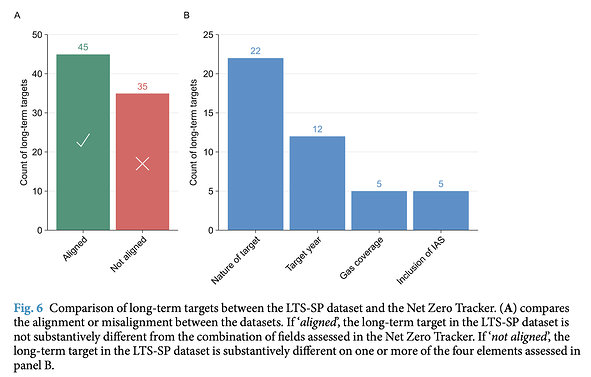A dataset of emissions and removals from scenarios and pathways within long-term national climate strategies – the LTS-SP dataset
This week, we take a deep dive into a paper recently published in Scientific Data. The study was led by a team of researchers led by Harry B. Smith from the School of Environmental Sciences of the University of East Anglia in Norwich (UK).
The paper presents the Long-Term Strategy Scenarios and Pathways (LTS-SP) dataset, which includes detailed projections of greenhouse gas (GHG) emissions and removals (i.e., carbon sequestration) from various sectors, such as energy, industry, agriculture, and land use. This comprehensive dataset provides valuable insights into the pathways and scenarios countries might follow to meet their climate goals submitted for the Paris Agreement under different policy assumptions. As such, it also serves as a useful tool for assessing climate mitigation efforts across countries. Total and sector-specific greenhouse gas emissions are analyzed in 2050, or the year net zero is reached, including emissions and removals from land use, land-use change, and forestry (LULUCF), as well as engineered carbon dioxide removal (CDR).
The LTS-SP dataset includes 91 long-term strategies, each evaluated based on two key elements: long-term targets and associated scenarios or pathways. Long-term targets extend beyond Nationally Determined Contributions (NDCs), typically focusing on mid-century net-zero goals. After compiling these targets, all relevant scenario and pathway models in the strategies are identified.
The dataset is also validated using other data, such as data from the Net Zero Tracker, an online platform monitoring targets set by UNFCCC Parties. This validation ensures that long-term targets are accurately coded and identifies any discrepancies between the datasets, as well as how up-to-date the LTS-SP dataset is. Our validation reveals significant differences, with 35 out of 80 countries assessed showing misalignments on at least one element and 22 countries having discrepancies based on the nature of the target.
Here is a list of the main takeaways of this paper:
- The LTS-SP dataset compiles 91 national long-term climate strategies, analyzing emissions and removals for 2050 or the net-zero year.
- It provides detailed insights into sector-specific emissions, including land-use, land-use change, forestry (LULUCF), and engineered carbon dioxide removal (CDR) methods.
- Long-term targets, extending beyond NDCs, are identified and compared with scenario and pathway models across the strategies.
- The dataset undergoes technical validation using the Net Zero Tracker to ensure the accuracy and alignment of long-term targets across countries.
- Validation results reveal significant disparities, with 35 out of 80 countries showing misalignments and 22 countries differing in the nature of their targets
Read the full paper here: A dataset of emissions and removals from scenarios and pathways within long-term national climate strategies – the LTS-SP dataset

